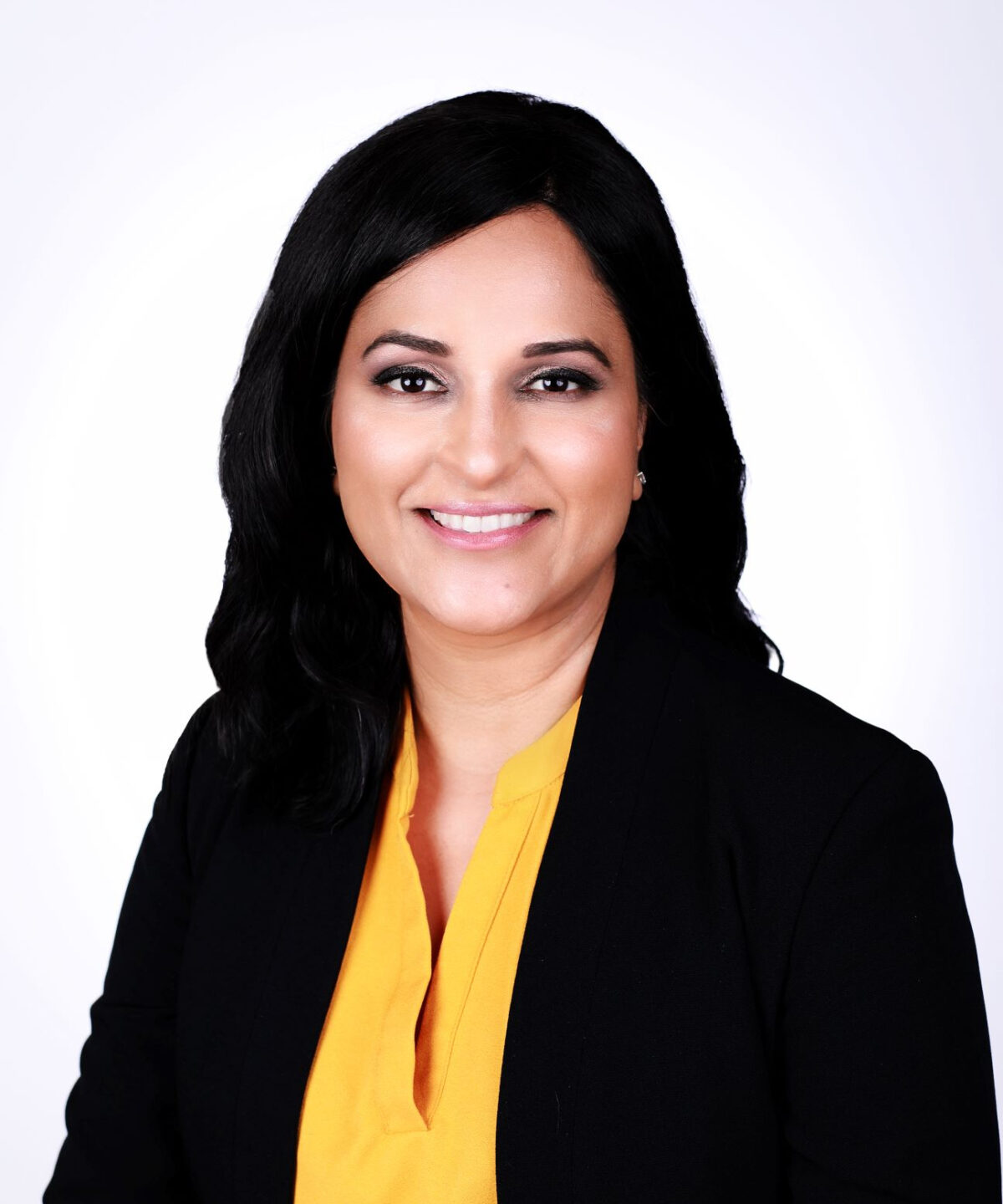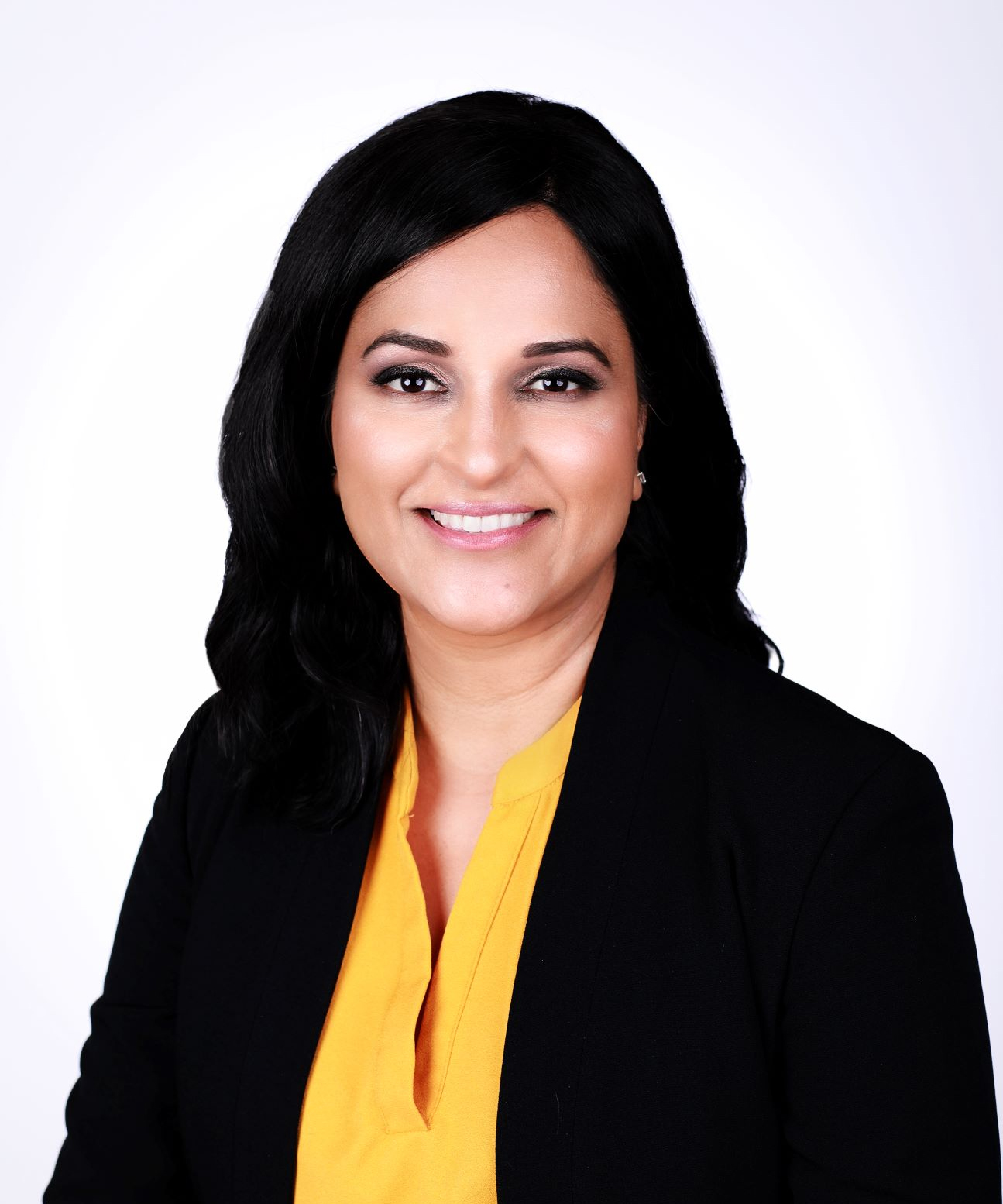Anu Mandapati is Vice President, Head of Diversity, Equity and Inclusion at Talking Talent, an organization focused on “creating workplaces where everyone can belong and grow.” It’s proven to be a perfect fit for Mandapati who says: “I create communities so people feel included. I’ve always brought people together, personally, and professionally.”
Mandapati has 20 years of diversity, inclusion, leadership, and organizational development experience. She specializes in coaching teams and organizations to increase their diverse talent pools, to develop more inclusive staff at all levels, and to increase performance and retention by creating work cultures where people feel like they can bring all of who they are to work.
Mandapati was born in India and moved to the United States when she was five. She says she remembers always attempting to juggle both cultures—“what does that look like to be ‘Indian enough,’ or ‘American enough’?—it was challenging growing up.”
Growing up, she says, she didn’t have a lot of mentors or role models to help juggle two cultures. “There was always that feeling that I didn’t exactly, completely belong.” Where that led her, she says, is to considering “how do I help to create that sense of belonging for others and when are they not feeling like they belong?”
The Pathway to DEI as a Career Focus
From a career standpoint, Mandapati says, she started out in mental health serving diverse populations. She transitioned from mental health to leadership development.
“To me, inclusive leadership is leadership,” she says. “It’s not something separate.” DEI, she says, has always been at the foundation of everything she’s done—“appreciating the differences that people bring, honoring and learning more about their intersectional identifies, helping them create teams that are high performing, inclusive, and innovative.”
Mandapati says that she has “always approached everyone with that inclusive lens and that belonging lens.” Everything she’s done, she says, has led her to DEI. “All of this has always been connected for me because I think leadership development, DEI and our wellbeing are really integrated and connected to create an inclusive culture where all employees can thrive.”
Talking Talent Provides a Good Fit
Talking Talent, says Mandapati took a focus about 15 years ago based on the two founders’ realization that a lot of women were leaving the workforce on parental leave and then facing challenges in returning. Many simply weren’t returning to the workplace. Talking Talent’s founders wanted to support working mothers so they would come back and thrive. That, says Mandapati grew into a focus on working parents, caregivers, women leaders and now, she says, “we have a full DEI practice.”
“We want to be transformational,” she says. “We don’t do one and done workshops or webinars. It’s really looking at how can we embed behavior and how can that really make a difference where we’re not just focused on the initial learning, but how can we amplify and sustain all of the learning so it sticks.”
An Inside Out Approach
Mandapati recalls that, when she was interviewing for her current role, she focused on the importance of “really making sure to do our internal work as an organization as we partnered with other organizations on their DEI journeys.” Talking Talent, Mandapati felt, needed to be a role model for others to emulate—obviously for us to be credible in this space we really need to walk our talk—we’re all on a journey together and it’s a journey, not a destination. We can all be in different places, but how do we move through this together?”
Part of that process, she says, is taking time to really understand employee experiences—collectively and individually. It’s not, she says, just about “understanding the Indian experience” or “understanding the Black experience” because each individual has an intersectional identity and their intersectional experience will be different. It’s about always increasing our understanding.
To help grow this understanding, Talking Talent’s American CEO and Global CEO went on listening tours where they met with employees individually to increase their connections with them and create a greater sense of belonging. While she says Talking Talent was fortunate enough to be able to be small enough to do this individually, the same thing could be achieved in larger organizations by conducting group sessions of various sizes.
The important factor is making the efforts to actively listen and approach the conversation with curiosity. “It means a lot that your CEO would take that time to do something like this,” she says.
Creating Alignment
At Talking Talent, Mandapati says, all service lines—from women’s leadership, to working parents, to wellbeing, etc.—all roll into DEI. Talking Talent has created a DEI Coaching Center of Excellence with the different communities of practice lined up to its different service lines. That she says, allows Talking Talent coaches to “really focus on upskilling and go deeper into the DEI journey.”
That alignment is important, she says. “You can’t do this work well, without doing your own work,” she says. “It requires deep self-exploration.”
Learn, Amplify, Sustain
Growing a diverse workforce is part of the overall DEI process and foundational to laying the groundwork for listening to, and hearing, different voices.
“We’ve definitely focused on bringing in more diverse representation—beyond just what’s visible,” Mandapati says. There could be over 30 dimensions of diversity, depending on the model you look at she says. Especially in the coaching role, she says, “we really want to make sure that our clients have access to coaches who represent various types of diversity.” That’s not always needed or requested, she says, but when it is, they’re able to provide those connections.
But diversity isn’t the goal. Change is the goal. One of the things that Mandapati believes sets Talking Talent apart is creating sustainable and measurable change through the “learn, amplify, sustain” model. So, for instance, a workshop might be held to help employees learn about concepts related to DEI. But then the next stage of individual or small group coaching would take learning even deeper to amplify the learning. Then the team would move on to the sustain stage—this might incorporate ongoing communication and feedback, through email coaching, for instance, to keep what has been learned front and center. “We want to keep this learning in front of people to really make sure that we’re implementing it and applying it,” she says.
Results require practice, Mandapati stresses. “The more we practice this, the better we become.” It’s not about “getting it perfect,” she says. “The more we practice, the more we make progress.”
Co-Creating a Ripple Effect Through Teams’ Work
Most of the work to create inclusive cultures, Mandapati says, occurs at the team level. That’s where people spend the most time; those are the people they spend the most time with. “The team is where we can co-create an inclusive culture,” she says. “How do we want to show up? How do we hold each other accountable? What support do we need?”
That practice takes place, initially, at the team level because that’s who employees interact with more than anyone else.
“Any way we can amplify—as in the learn, amplify, sustain model—that amplification can be how we hold each other accountable and support each other at that team level. The more teams that do this, the more you shift organizational culture.”
This creates a powerful ripple effect driven by employees who understand DEI at an individual and team level, carrying that message and DEI practices forward collectively.
Importantly, Mandapati says, DEI is a group endeavor. It requires everyone in the organization. “I see us as culture co-creators, not as culture carriers. As we co-create the culture, it’s about having everyone on board. Ultimately, she says: “It’s not about blame and shame and calling people out—it’s about calling out behavior by calling people in to be a part of the journey and to be a part of the change so that we can all shift together.”
Lin Grensing-Pophal is a Contributing Editor at HR Daily Advisor.
The post Creating Sustainable Change Through Ripples of DEI: Calling People In, Instead of Calling People Out appeared first on HR Daily Advisor.

